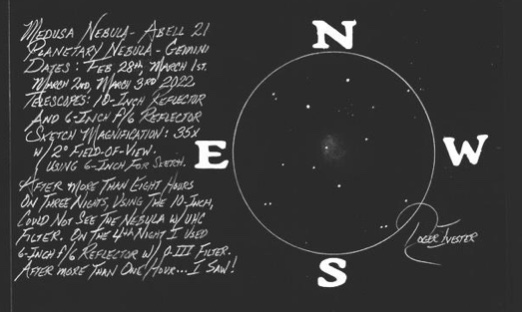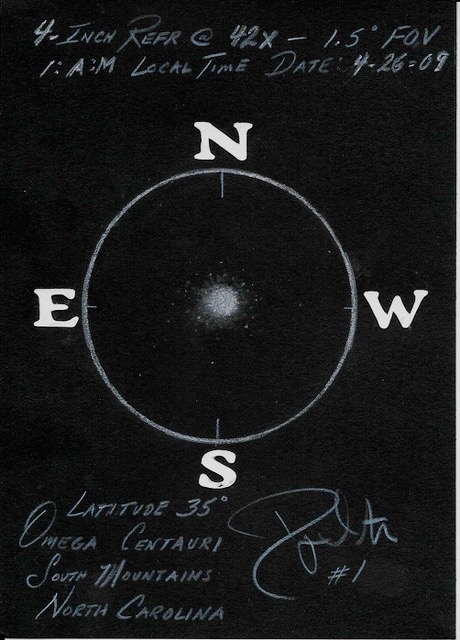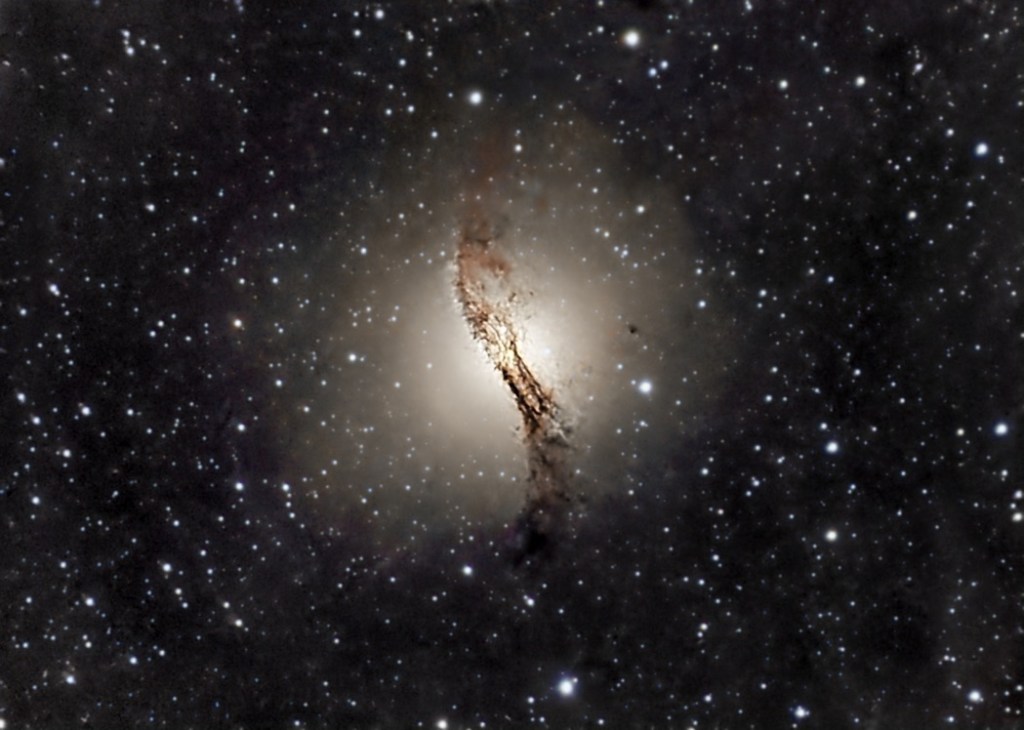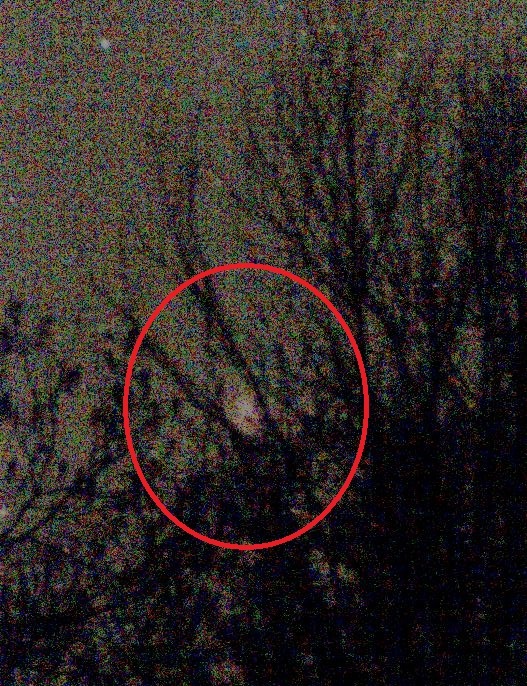The following Information taken from “Deep-Sky Wonders” by Sue French:
Sweeping 2 1/2º eastward brings us to the cluster NGC 2395. My little refractor at 87x reveals 20 stars loosely scattered across 15′. At 28x, it merely shows a granular-looking patch with two faint stars, but something remarkable happens when I add an oxygen III filter. Although completely invisible before, Abell 21, the Medusa Nebula, joins the scene 1/2º southeast of the cluster! I can see it with direct vision, but it shows up better with averted vision. This unusual planetary nebula is about 8′ across, dented in its northwest side, and brightest toward the northeast and southwest. With my 10-inch scope at 68x, I prefer viewing Abell 21 with a narrowband nebula filter (rather than the oxygen III filter) which shows this large, impressive detailed planetary to be very uneven in brightness. SF
MONTHLY OBSERVER’S CHALLENGE
Compiled by:
Roger Ivester, North Carolina
&
Sue French, New York
March 2022
Report #158
The Medusa Nebula, (Abell 21, PK 205+14 1, PN G205.1+14.2)
Planetary Nebula in Gemini
Sharing Observations and Bringing Amateur Astronomers Together
Introduction:
This month’s target:
Abell 21 was discovered during the course of the Yerkes-McDonald survey of symmetric galactic nebulae. The ensuing catalog was published by Hugh M. Johnson in the May 1955 issue of the Astrophysical Journal, in which it was given the designation YM 29. https://ui.adsabs.harvard.edu/#abs/1955ApJ…121..604J/abstract
The nebula was independently discovered by George O. Abell among globular clusters and planetary nebulae newly found on the National Geographic Society-Palomar Observatory Sky Survey. His paper was published in the August 1955 issue of the Publications of the Astronomical Society of the Pacific, which listed 13 globular clusters and 37 planetary nebulae.
https://ui.adsabs.harvard.edu/#abs/1955PASP…67..258A/abstract
Although the nebula is number 16 in Abell’s list of planetaries, it’s now commonly known as Abell 21. His well-known, updated list of 86 planetary nebulae was published in the Astrophysical Journal in 1966, and since the nebulae are given in order of right ascension their numbers were changed accordingly.
https://ui.adsabs.harvard.edu/#abs/1966ApJ…144..259A/abstract
In his 1961 “A Description of Fifty Planetary Nebulae” https://ui.adsabs.harvard.edu/#abs/1961AZh….38…75V/abstract, B. A.Vorontsov-Vel’Yaminov, credits the name Medusa Nebula to a 1961 entry in Astronomicheskij Tsirkulyar No.221 (1960), which unfortunately or mercifully, depending on your point of view, I do not have access to. Sue French

Bertrand Laville: Observer from France (pencil sketch)

Roger Ivester: Observer from North Carolina
Pencil sketch using a 10-inch f/4.5 equatorially mounted reflector

Abell 21 also known as the Medusa Nebula:
After spending four nights and ten hours, with two different telescopes, and multiple eyepieces and filters: I was finally able to “visually” see the Medusa Nebula. For me…the euphoria of seeing an extremely faint deep-sky object after many nights and hours, can “or might be similar” to something physical, such as running a marathon, which I’ve never done, but I have competed in bicycle races.
To be able to locate and “visually” see the Medusa Nebula, a very dark sky is most desirable, but which is something I don’t have from my suburban backyard. My best NELM seldom exceeds 5.0-5.2 on a superb winter night. But I’ve always tried to make-do, and thus far, been successful in seeing all of the challenge objects for the past almost 14 years, and now exceeds more than 200 deep-sky objects.
The Medusa Nebula is the most difficult (visual) object featured to-date in the Observer’s Challenge report for the past almost fourteen years. This might be proof that a dark site with a 6.0-7.0 NELM is not necessary to enjoy the wonders of the night sky.
The Medusa Nebula:
Easy for the imager, but extremely difficult for the “purist” back yard amateur astronomer, using an eyepiece, an O-III or UHC filters, a pencil, note and sketch pad.
Amateur astronomy can be anything the amateur wants it to be. But for me, I want it be “not too distant” from the nights, taking out a 60mm refractor, in what I called the “weedy-field” beside my childhood home. I wanted to see some of those fabulous spiral galaxies (and in color) that I’d seen in my 6th grade science book. Of course I never did, but without any support or guidance, I learned what was possible.
I’ve never been disappointed in those very faint objects that are barely visible in the eyepiece, and requires hours or nights to finally see, but somehow “for me” those are my favorite. Where in the solitude of the night, I might whisper to myself: THAT’S IT !
For those few that choose to carefully, and with patience, observe and sketch a deep-sky object, also supplementing with copious notes, they will never forget what that object looks like, and with instant recall.
After 50 years of observing, I’m so glad I never lost my EP, my pencil, or my sketchpad, as I never had any desire to become an imager. I also have a library with hundreds and hundreds of “one of a kind” pencil sketches, to review, and for future reference.
If you’ve never attempted to make a pencil sketch, with supporting notes, you should consider. And we need to keep the ancient art of visual observing and “pencil sketching” alive. A skill or facet of amateur astronomy that fewer and fewer seem to be interested in these days.
After all, this was the original reason or concept for the founding of the Observer’s Challenge back in 2009. Roger Ivester









Recent Comments